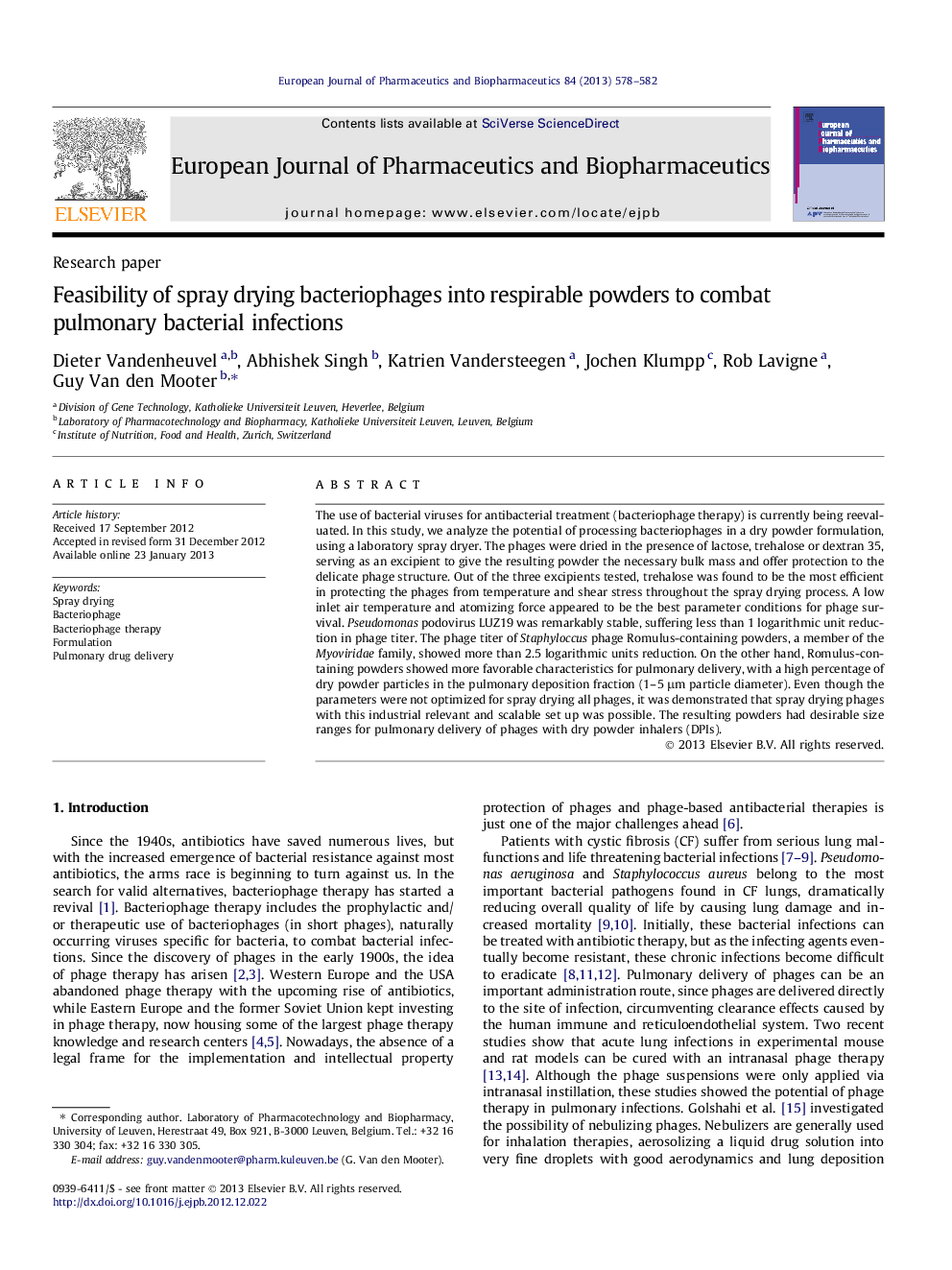| Article ID | Journal | Published Year | Pages | File Type |
|---|---|---|---|---|
| 2083480 | European Journal of Pharmaceutics and Biopharmaceutics | 2013 | 5 Pages |
The use of bacterial viruses for antibacterial treatment (bacteriophage therapy) is currently being reevaluated. In this study, we analyze the potential of processing bacteriophages in a dry powder formulation, using a laboratory spray dryer. The phages were dried in the presence of lactose, trehalose or dextran 35, serving as an excipient to give the resulting powder the necessary bulk mass and offer protection to the delicate phage structure. Out of the three excipients tested, trehalose was found to be the most efficient in protecting the phages from temperature and shear stress throughout the spray drying process. A low inlet air temperature and atomizing force appeared to be the best parameter conditions for phage survival. Pseudomonas podovirus LUZ19 was remarkably stable, suffering less than 1 logarithmic unit reduction in phage titer. The phage titer of Staphyloccus phage Romulus-containing powders, a member of the Myoviridae family, showed more than 2.5 logarithmic units reduction. On the other hand, Romulus-containing powders showed more favorable characteristics for pulmonary delivery, with a high percentage of dry powder particles in the pulmonary deposition fraction (1–5 μm particle diameter). Even though the parameters were not optimized for spray drying all phages, it was demonstrated that spray drying phages with this industrial relevant and scalable set up was possible. The resulting powders had desirable size ranges for pulmonary delivery of phages with dry powder inhalers (DPIs).
Graphical abstractIn this study, a 4% saccharide excipient solutions containing bacteriophages was processed into a solid powder, suitable for combtting pulmonary infections. This was done by spray drying, a one-step up-scalable process. The effect of different excipients and drying parameters on the survival of phages was examined.Figure optionsDownload full-size imageDownload high-quality image (189 K)Download as PowerPoint slide
